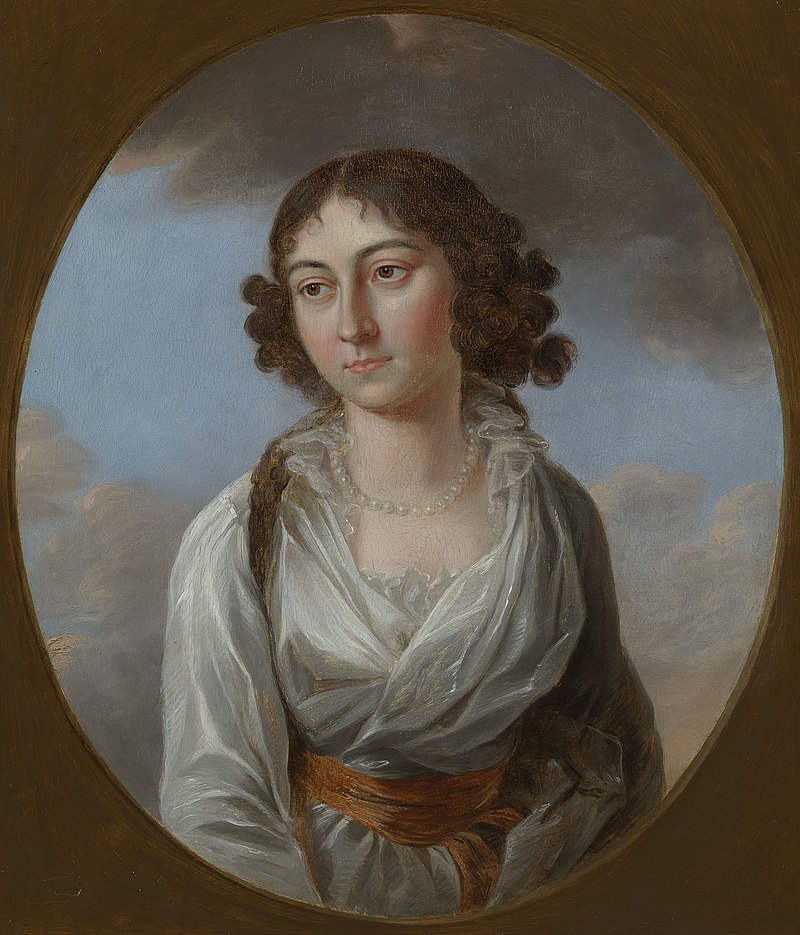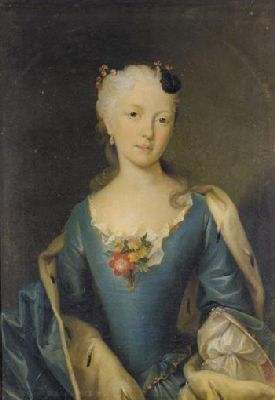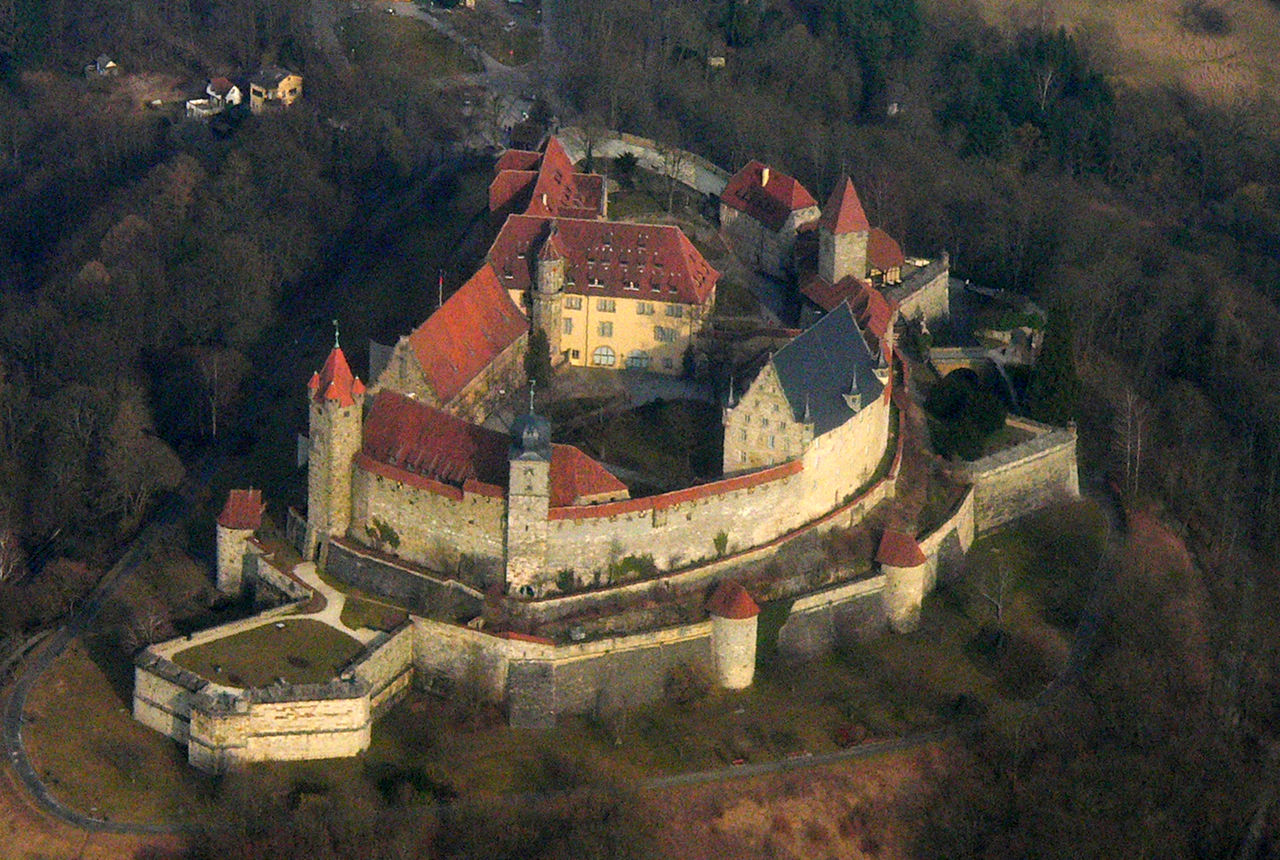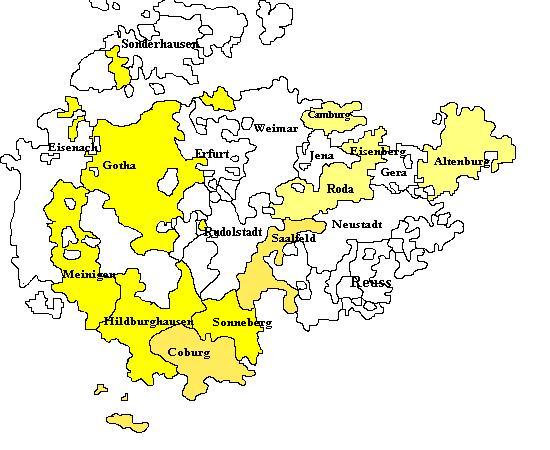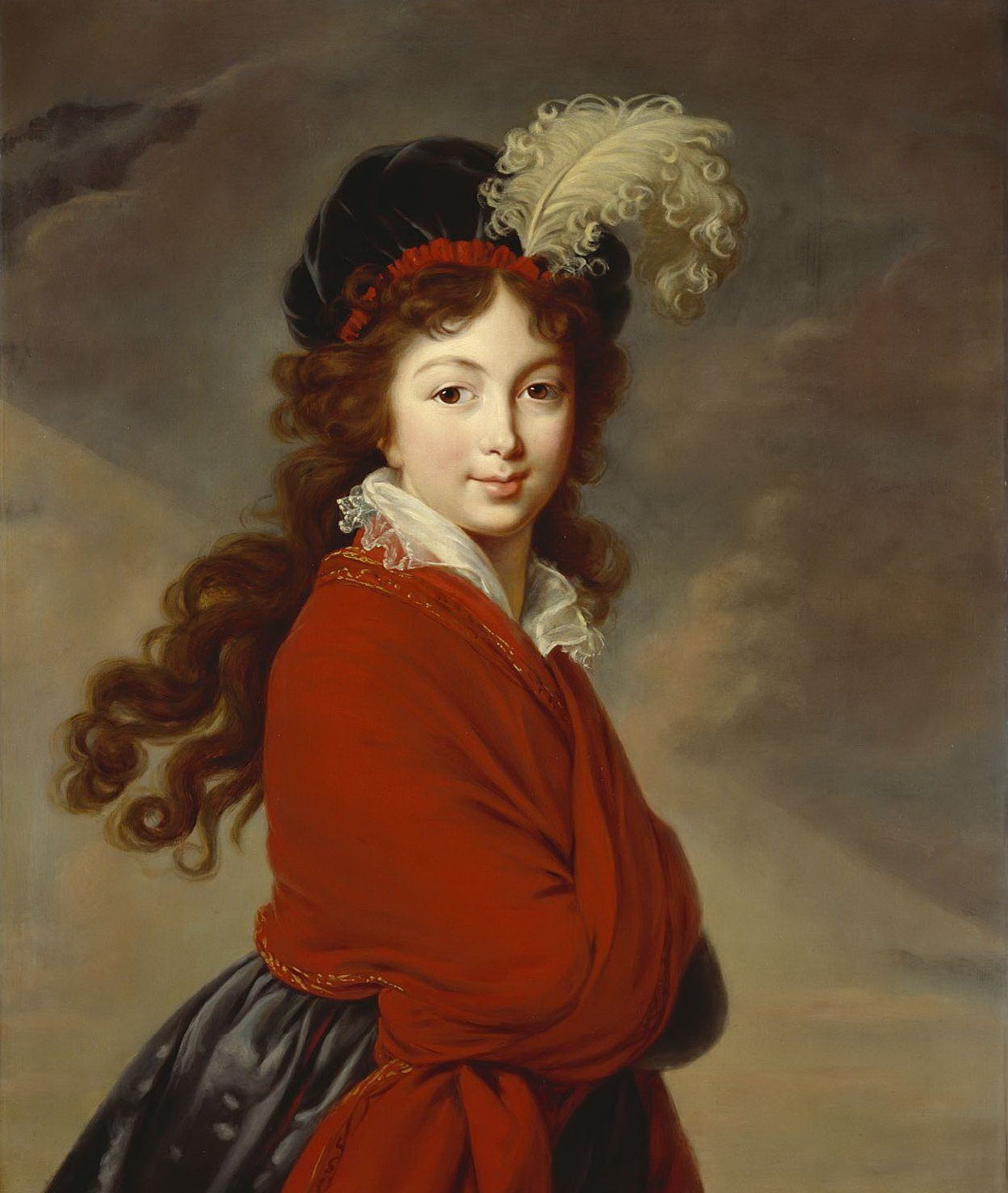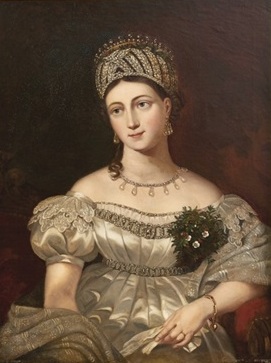by Susan Flantzer
© Unofficial Royalty 2023
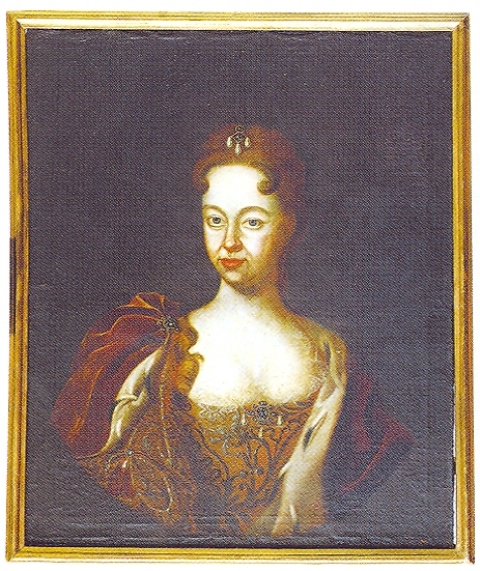
Sophia Wilhelmina of Saxe-Coburg-Saalfeld, Princess of Schwarzburg-Rudolstadt; Credit – Wikipedia
Principality of Schwarzburg-Rudolstadt and the Principality of Schwarzburg-Sondershausen: The County of Schwarzburg was a state of the Holy Roman Empire from 1195 to 1595, when it was partitioned into Schwarzburg-Rudolstadt and Schwarzburg-Sondershausen. The new counties remained in the Holy Roman Empire until its dissolution. In 1697, the County of Schwarzburg-Sondershausen was elevated to the Principality of Schwarzburg-Sondershausen. The County of Schwarzburg-Rudolstadt was elevated to the Principality of Schwarzburg-Rudolstadt in 1710.
The death of Karl Günther, Prince of Schwarzburg-Sondershausen without an heir in 1909 caused the Principalities of Schwarzburg-Rudolstadt and Schwarzburg-Sondershausen to be united under Günther Victor, Prince of Schwarzburg-Rudolstadt in a personal union. Following his succession in Sondershausen, Prince Günther Victor dropped the name Rudolstadt from his title and assumed the title Prince of Schwarzburg.
At the end of World War I, Prince Günther Victor was the last German prince to renounce his throne, abdicating on November 22, 1918. He made an agreement with the government that awarded him an annual pension and the right to use several of the family residences. The territory that encompassed the Principalities of Schwarzburg-Rudolstadt and Schwarzburg-Sondershausen is now located in the German state of Thuringia.
**********************
Sophia Wilhelmina of Saxe-Coburg-Saalfeld was the first wife of Friedrich Anton, Prince of Schwarzburg-Rudolstadt. Born on August 9, 1693, in Saalfeld, then in the Duchy of Saxe-Coburg-Saalfeld, now in the German state of Thuringia, Sophia Wilhelmina was the third of the eight children and the eldest of the five daughters of Johann Ernst IV, Duke of Saxe-Coburg-Saalfeld and his second wife Charlotte Johanna of Waldeck-Wildungen. Sophia Wilhemina’s paternal grandparents were Ernst I, Duke of Saxe-Gotha and Elisabeth Sophie of Saxe-Altenburg. Her maternal grandparents were Count Josias II of Waldeck-Wildungen and Countess Wilhelmine Christine of Nassau-Siegen.
Sophia Wilhelmina had seven siblings but only four survived childhood:
- Wilhelm Friedrich of Saxe-Coburg-Saalfeld (1691 – 1720), unmarried
- Karl Ernst of Saxe-Coburg-Saalfeld (1692 – 1720), unmarried
- Henriette Albertine of Saxe-Coburg-Saalfeld (1694 – 1695), died in infancy
Luise Amaliaof Saxe-Coburg-Saalfeld (1695 – 1713), died as a teenager - Charlotte of Saxe-Coburg-Saalfeld (born and 1696), died in infancy
- Franz Josias, Duke of Saxe-Coburg-Saalfeld (1697 – 1764), married Anna Sophie of Schwarzburg-Rudolstadt, had four sons and four daughters
- Henriette Albertine of Saxe-Coburg-Saalfeld (1698 – 1728), unmarried
Sophia Wilhelmina had three half-siblings from her father’s first marriage to Sophie Hedwig of Saxe-Merseburg who died on August 2, 1686, giving birth to a stillborn son.
- Christiane Sophie of Saxe-Coburg-Saalfeld (1681 – 1697), died as a teenager
- Christian Ernst II, Duke of Saxe-Coburg-Saalfeld (1683 – 1745), married Christiane Fredericka of Koss, no children
- Charlotte Wilhelmine of Saxe-Coburg-Saalfeld (1685 – 1767), married Philip Reinhard, Count of Hanau-Münzenberg, no children
In 1699, when Sophia Wilhelmina was six years old, her 34-year-old mother Charlotte Johanna died a little more than two months after giving birth to her eighth child. Sophia Wilhelmina’s father never remarried.
Friedrich Anton, Prince of Schwarzburg-Rudolstadt; Credit – Wikipedia
Sophia Wilhelmina’s father undertook a marriage policy to create a better alliance with the Principality of Schwarzburg Rudolstadt. On February 8, 1720, in Saalfeld, Duchy of Saxe-Coburg-Saalfeld, now in the German state of Thuringia, 26-year-old Sophia Wilhelmina married 28-year-old Friedrich Anton, Prince of Schwarzburg-Rudolstadt. Three years later, Sophia Wilhelmine’s younger brother, the future Franz Josias, Duke of Saxe-Coburg-Saalfeld married Anna Sophie of Schwarzburg-Rudolstadt, the younger sister of Sophie Wilhelmina’s husband.
Sophia Wilhelmina and Friedrich Anton had three children but only two survived childhood:
- Johann Friedrich, Prince of Schwarzburg-Rudolstadt (1721 – 1767), married Bernardina Christiane of Saxe-Weimar-Eisenach, had four surviving daughters
- Sophia Wilhelmina of Schwarzburg-Rudolstadt (born and died 1723)
- Sophia Albertine of Schwarzburg-Rudolstadt (1724–1799), unmarried
The marriage of Friedrich Anton and Sophia Wilhelmina lasted only seven years as Sophia Wilhelmina died on December 4, 1727, aged 34, in Rudolstadt, Principality of Schwarzburg-Rudolstadt, now in the German state of Thuringia. She was buried at the Schlosskirche Schwarzburg, the castle church at Schwarzburg Castle (link in German) in Schwarzburg, Principality of Schwarzburg-Rudolstadt, now in the German state of Thuringia.

Schlosskirche Schwarzburg, circa 1890; Credit – Wikipedia
Sophia Wilhelmina’s husband Friedrich Anton married again, on January 6, 1729, to Christina Sophia of East Friesia, the eldest daughter of Prince Christian Eberhard of East Friesia and Eberhadine Sophie of Oettingen-Oettingen. Unfortunately, the marriage was childless. Friedrich Anton survived his first wife Sophia Wilhelmina by fifteen years, dying on September 1, 1744, aged 52, in Rudolstadt. He was also buried at the Schlosskirche Schwarzburg, the castle church at Schwarzburg Castle in Schwarzburg, Principality of Schwarzburg-Rudolstadt, now in the German state of Thuringia, as was his second wife Christina Sophia when she died six years later.

Stadtkirche St. Andreas; Credit – Wikipedia
In the early 1940s, the remains of the Schwarzburg-Rudolstadt family buried at the Schlosskirche Schwarzburg were transferred to the Stadtkirche St. Andreas in Rudolstadt, Thuringia, Germany before the demolition of Schwarzburg Castle and Schlosskirche Schwarzburg by the German government who planned to convert the castle into Adolf Hitler’s Imperial Guest House. However, the construction was never completed and the ruins of the castle and the incomplete construction of the guest house were left for years until reconstruction of the original castle, which is still occurring, began.
This article is the intellectual property of Unofficial Royalty and is NOT TO BE COPIED, EDITED, OR POSTED IN ANY FORM ON ANOTHER WEBSITE under any circumstances. It is permissible to use a link that directs to Unofficial Royalty.
Works Cited
- Flantzer, Susan. (2020) Friedrich Anton, Prince of Schwarzburg-Rudolstadt, Unofficial Royalty. Available at: https://www.unofficialroyalty.com/friedrich-anton-prince-of-schwarzburg-rudolstadt/ (Accessed: 07 September 2023).
- Flantzer, Susan. (2019) Johann Ernst IV, Duke of Saxe-Coburg-Saalfeld, Unofficial Royalty. Available at: https://www.unofficialroyalty.com/johann-ernst-iv-duke-of-saxe-coburg-saalfeld/ (Accessed: 07 September 2023).
- Flantzer, Susan, 2020. Royal Burial Sites Of The Principality Of Schwarzburg-Rudolstadt. [online] Unofficial Royalty. Available at: <https://www.unofficialroyalty.com/royal-burial-sites/royal-burial-sites-of-the-principality-of-schwarzburg-rudolstadt/> [Accessed 07 September 2023].
- Princess Sophia Wilhelmina of Saxe-Coburg-Saalfeld (2023) Wikipedia. Available at: https://en.wikipedia.org/wiki/Princess_Sophia_Wilhelmina_of_Saxe-Coburg-Saalfeld (Accessed: 07 September 2023).
- Sophie Wilhelmine von Sachsen-Saalfeld (2023) Wikipedia (German). Available at: https://de.wikipedia.org/wiki/Sophie_Wilhelmine_von_Sachsen-Saalfeld (Accessed: 07 September 2023).







